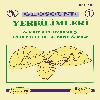İlkokul çocuklarının harita çizimi ve okuma becerilerini ölçme ve değerlendirmeye yönelik bir vaka çalışması
Bu çalışmada, ilkokul öğrencilerinin harita çizimi ve okuma becerisi tespit edilmeye çalışılmıştır. Bu amaç doğrultusunda ilk olarak çocuklara evden okula geliş rotaları (ev-okul haritaları) çizdirilmiş ve sonuçlar çeşitli ölçütlere göre değerlendirilmiştir. İkinci olarak basılı bir Dünya haritasında gördüklerini aynen çizmeleri istenmiş ve sonuçlar yine çeşitli ölçütlere göre değerlendirilmiştir. Son olarak sınıfın belli bir yerine bir cisim saklanmış ve mevcut bir haritadan (yaklaşık ölçekli sınıf planından) yararlanarak bu cismi bulmaları istenmiştir. Sonuç olarak, öğrenciler tarafından çizilen haritalarda (ev-okul ve Dünya haritaları) yaşla doğru orantılı bir nitelik artışı olmadığı ve çoğunluğunun orta nitelikte olduğu tespit edilmiştir. Bununla birlikte, harita kullanma becerisi bakımından öğrencilerin oldukça iyi oldukları gözlenmiştir.
Anahtar Kelimeler:
Kartografya, Harita Aktiviteleri, Topolojik İlişkiler, Harita Becerileri
___
- Carswell R J B (1970). Children’s Abilities in Topographic Map Reading. https://files.eric.ed.gov/fulltext/ED043557.pdf
- Daggs D G (1986). Pyramid of Places: Children’s Understanding of Geographic Hierarchy.”
- Harwood D & Jackie M (1996). Young Children’s Understanding of Nested Hierarchies of Place Relationships. International Research in Geographical & Environmental Education 5(1):3–29. https://www.tandfonline.com/doi/abs/10.1080/10382046.1996.9964985
- Harwood D & Kay R (2001). Assessing Young Children’s Freehand Sketch Maps of the World.” International Research in Geographical and Environmental Education 10(1):20–45. https://www.tandfonline.com/doi/abs/10.1080/10382040108667422
- Harwood D & Margaret U (1999). Assessing Progression in Primary Children’s Map Drawing Skills. International Research in Geographical and Environmental Education 8(3):222–38. https://www.tandfonline.com/doi/abs/10.1080/10382049908667613
- Hennerdal P (2015). Beyond the Periphery: Child and Adult Understanding of World Map Continuity. Annals of the Association of American Geographers 105(4):773–90. https://www.tandfonline.com/doi/full/10.1080/00045608.2015.1022091
- Jahoda G (1963). The Development of Children’s Ideas About Country and Nationality: Part I: The Conceptual Framework. British Journal of Educational Psychology 33(1):47–60. https://bpspsychub.onlinelibrary.wiley.com/doi/abs/10.1111/j.2044-8279.1963.tb00562.x
- Joshi M S, Morag M & Wakefield C (1999). Children’s Journey to School: Spatial Skills, Knowledge and Perceptions of the Environment. British Journal of Developmental Psychology 17(1):125–39. https://bpspsychub.onlinelibrary.wiley.com/doi/abs/10.1348/026151099165195
- Kızılçaoğlu A (2007). HARİTA BECERİLERİNE PEDAGOJİK BİR BAKIŞ. Selçuk Üniversitesi Sosyal Bilimler Enstitüsü Dergisi (18):341–58. http://dergisosyalbil.selcuk.edu.tr/susbed/article/view/455
- Ooms K, Philippe De M, Lien D, Nina Van der V, Nico Van de W & Stephanie V (2016). Education in Cartography: What Is the Status of Young People’s Map-Reading Skills? Cartography and Geographic Information Science 43(2):134–53. https://www.tandfonline.com/doi/full/10.1080/15230406.2015.1021713
- Petchenik B B (1987). Fundamental considerations about atlases for children.Cartographica: The International Journal for Geographic Information and Geovisual-ization, 24(1),16-23. https://www.utpjournals.press/doi/abs/10.3138/T813-3545-5444-6G81
- Piaget J & Inhelder B (1956). The child’s conception of space. Routledge and Kegan Paul, London.
- Piche D (1977). The Geographical Understanding of Children Aged 5 to 8 Years. https://ethos.bl.uk/OrderDetails.do?uin=uk.bl.ethos.261176
- Piche D (1981). The Spontaneous Geography of the Urban Child. Geography and the Urban Environment: Progress in Research and Applications 4:229–56.
- Sena C C R G D & Carmo W R D (2020). School cartography in Brazil and its inclusive perspective. International Journal of Cartography, 6(3), 316-330. https://www.tandfonline.com/doi/full/10.1080/23729333.2020.1824565
- Sönmez Ö F & Bülent A (2013). CUMHURİYETTEN GÜNÜMÜZE İLKÖĞRETİM PROGRAMLARINDA HARİTA BECERİLERİ. Türkiye Sosyal Araştırmalar Dergisi 171(171):269–88. https://dergipark.org.tr/en/pub/tsadergisi/issue/21497/230500
- Şenol H İ & Gökgöz T (2018). A Case Study on Map Activities with Children of Kindergarten Age. https://www.researchgate.net/publication/328686567
- Şenol H İ & Gökgöz T (2020). Ortaokul Çocuklarının Harita Becerilerini Ölçme ve Değerlendirmeye Yönelik Bir Vaka Çalışması. Harran Üniversitesi Mühendislik Dergisi, 5(3), 157-174. https://dergipark.org.tr/en/pub/humder/issue/58494/770944
- Towler J O (1970). The Elementary School Child’s Concept of Reference Systems. Journal of Geography 69(2):89–93. https://www.tandfonline.com/doi/abs/10.1080/00221347008981757
- Towler T O & L D N (1968). The Elementary School Child’s Concept of Scale. Journal of Geography 67(1):24–28. https://www.tandfonline.com/doi/abs/10.1080/00221346808981035
- Trifonoff K M (1995). Going beyond Location: Thematic Maps in the Early Elementary Grades. Journal of Geography 94(2):368–74. https://www.tandfonline.com/doi/abs/10.1080/00221349508979745
- Weber A, Bernhard J, Matthias W, Juliane C, Philipp M & Lorenz H (2010). Cartography Meets Gaming: Navigating Globes, Block Diagrams and 2D Maps with Gamepads and Joysticks. The Cartographic Journal 47(1):92–100. https://www.tandfonline.com/doi/abs/10.1179/000870409X12472347560588
- Wiegand P (1995). Young Children’s Freehand Sketch Maps of the World. International Research in Geographical & Environmental Education 4(1):19–28. https://www.tandfonline.com/doi/abs/10.1080/10382046.1995.9964956
- Wiegand P & Bernadette S (1997). Children’s Relief Maps of Model Landscapes. British Educational Research Journal 23(2):179–92.
- Windiastuti R (2012). Map Drawing Competition for Children in Indonesia. 255–67 in Maps for the Future. Springer. https://link.springer.com/chapter/10.1007/978-3-642-19522-8_21
- Yayın Aralığı: Yılda 3 Sayı
- Başlangıç: 2016
- Yayıncı: Murat yakar
Sayıdaki Diğer Makaleler
Türkiye'de imar uygulama mevzuatındaki gelişim süreci
Esra SONEL KANDEMİR, Tayfun ÇAY
Web tabanlı mekânsal analizlerin açık kaynak kodlu yazılımlar ile gerçekleştirilmesi
Halil İbrahim ONYIL, Mehmet YILMAZ
Türkiye'de imar uygulama mevzuatındaki gelişim süreci
Tayfun ÇAY, Esra SONEL KANDEMİR
Mehmet Hanifi ALKAYIŞ, Asena KARSLIOĞLU, Mehmet İnanç ONUR
Deniz ARCA, Hülya KESKİN ÇITIROĞLU
Halil İbrahim ŞENOL, Türkay GÖKGÖZ
Hücresel otomata markov zincir yöntemi ile kentsel yayılmanın modellenmesi: Kerkük ili örneği
